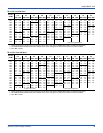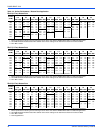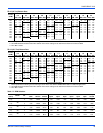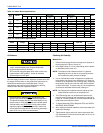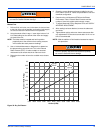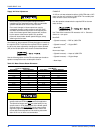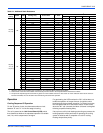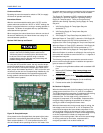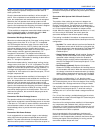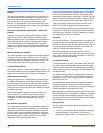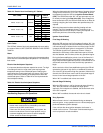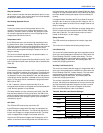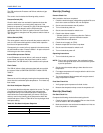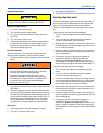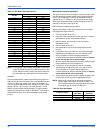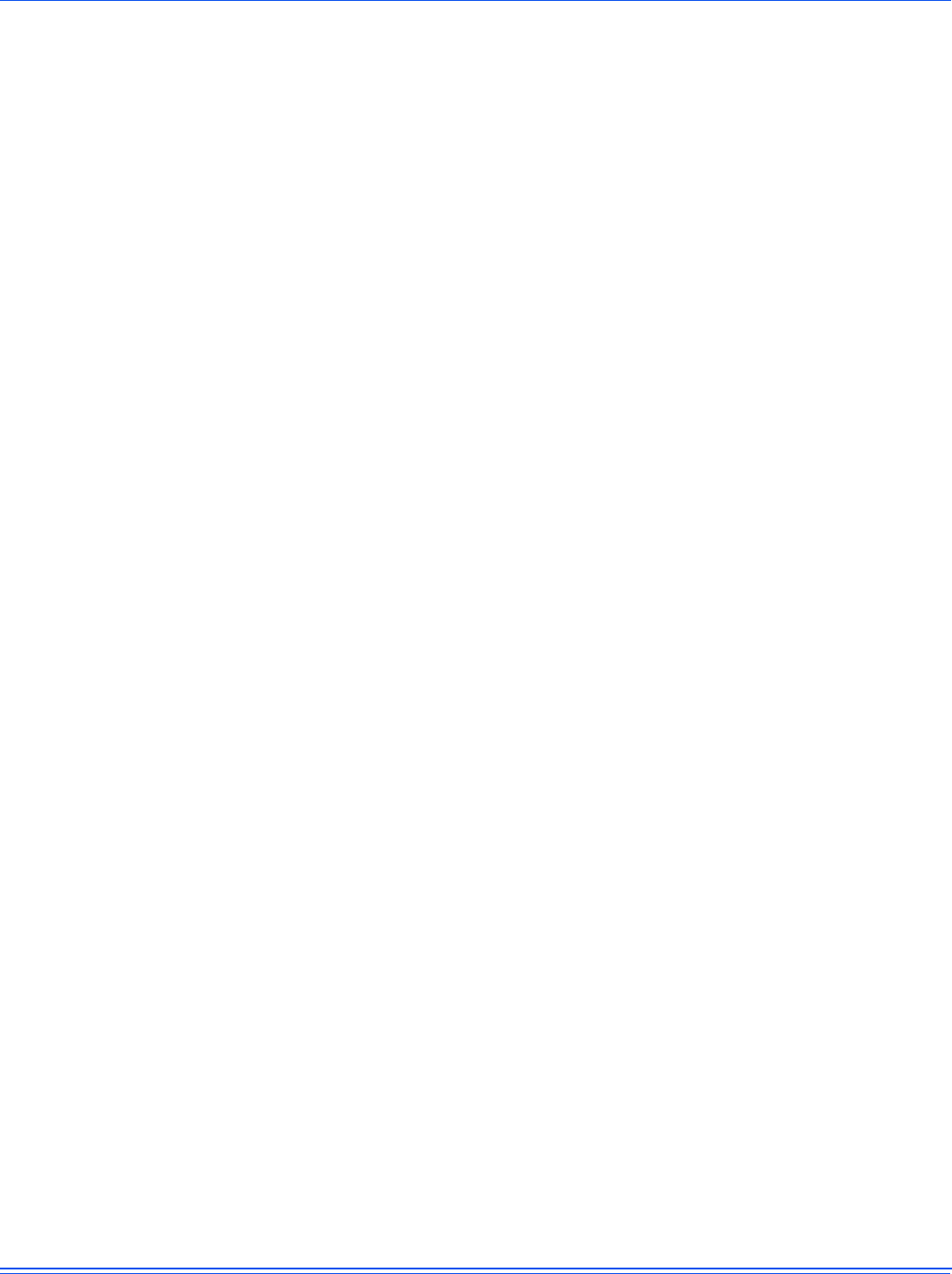
518676-BIM-E-1210
Johnson Controls Unitary Products 51
If there is an initial call for both stages of cooling, the UCB will
delay energizing compressor #2 by 30 seconds in order to
avoid a power rush.
Once the thermostat has been satisfied, it will de-energize Y1
and Y2. If the compressors have satisfied their minimum run
times, the compressors and condenser fans are de-energized.
Otherwise, the unit operates each cooling system until the
minimum run times for the compressors have been completed.
Upon the final compressor de-energizing, the blower is stopped
following the elapse of the fan off delay for cooling.
* To be available, a compressor must not be locked-out due to a
high or low-pressure switch or freezestat trip and the Anti-
Short Cycle Delay (ASCD) must have elapsed.
Economizer With Single Enthalpy Sensor
When the room thermostat calls for "first-stage" cooling, the low
voltage control circuit from "R" to "G" and "Y1" is completed.
The UCB energizes the blower motor (if the fan switch on the
room thermostat is set in the "AUTO" position) and drives the
economizer dampers from fully closed to their minimum
position. If the enthalpy of the outdoor air is below the set point
of the enthalpy controller (previously determined), "Y1"
energizes the economizer. The dampers will modulate to
maintain a constant supply air temperature as monitored by the
discharge air sensor. If the outdoor air enthalpy is above the set
point, "Y1" energizes compressor #1.
When the thermostat calls for "second-stage" cooling, the low
voltage control circuit from "R" to "Y2" is completed. The UCB
energizes the first available compressor. If the enthalpy of the
outdoor air is below the set point of the enthalpy controller (i.e.
first stage has energized the economizer), "Y2" will energize
compressor #1. If the outdoor air is above the set point, "Y2" will
energize compressor #2.
Once the thermostat has been satisfied, it will de-energize “Y1”
and “Y2”. If the compressors have satisfied their minimum run
times, the compressors and condenser fans are de-energized.
Otherwise, the unit operates each cooling system until the
minimum run times for the compressors have been completed.
Upon the final compressor de-energizing, the blower is stopped
following the elapse of the fan off delay for cooling, and the
economizer damper goes to the closed position. If the unit is in
continues fan operation, the economizer damper goes to the
minimum position.
Economizer With Dual Enthalpy Sensors
The operation with the dual enthalpy sensors is identical to the
single sensor except that a second enthalpy sensor is mounted
in the return air. This return air sensor allows the economizer to
choose between outdoor air and return air, whichever has the
lowest enthalpy value, to provide maximum operating
efficiency.
Economizer With Power Exhaust
A unit equipped with an economizer (single or dual enthalpy)
and a power exhaust operates as specified above with one
addition. The power exhaust motor is energized 45 seconds
after the actuator position exceeds the exhaust fan set point on
the economizer control. As always, the "R" to "G" connection
provides minimum position but does not provide power exhaust
operation.
Economizer With Optional VAV OR Intelli-Comfort™
Control
The position of the outside air and return air dampers are
controlled through a 2-10 VDC signal from the VAV or Intelli-
Comfort™ control board. The economizer is enabled only in
Occupied or Recovery mode. When the control is not powered
or is in Unoccupied mode, the outside air dampers will be
closed. When the supply fan is powered and there is no Y1 call,
or if free-cooling is unavailable, the control opens the
economizer dampers to the minimum position setting.
Free-cooling is available if the outdoor air temperature meets
one of the three criteria discussed below, based upon the unit's
configuration.
• Dry Bulb: The control refers to input from the Outside Air
Temperature sensor and will allow free cooling when the
outdoor temperature is less than both the First-Stage SAT
Control set point plus 5 °F, and the Economizer OAT
Enable set point.
• Single Enthalpy (optional): A field-installed, Outdoor Air
Humidity sensor is connected to the control. When the
measured outdoor enthalpy is below the Outside Air
Enthalpy set point, and the outdoor temperature is less
than the First-Stage SAT Control set point plus 5 °F, free-
cooling is available.
• Dual Enthalpy (optional): Both the field-installed
Outdoor Air Humidity and the Return Air Humidity sensors
are connected to the control. When the measured outdoor
air enthalpy is less than the measured return air enthalpy,
and the outdoor temperature is less than the First-Stage
SAT Control set point plus 5 °F, free-cooling is available.
If free-cooling is available with a Y1 call, then the control
modulates the economizer dampers to maintain the First-Stage
SAT Control set point, plus or minus one degree. If free-cooling
is unavailable, then 1st-stage mechanical cooling is initiated.
If at anytime the outdoor air temperature rises above the First-
Stage SAT Control set point plus 5 °F, while free-cooling is
available, then a Y1 call will also initiate 1st-stage mechanical
cooling.
For a Y2 call, free-cooling is available based upon the criteria
described above, except a Second-Stage SAT Control set point
is used in the determination.
Once the call for cooling has been satisfied, it will de-energize
any compressors and condenser fans, after the minimum
compressor run times have been satisfied. Otherwise, the unit
operates each cooling system until the minimum run times for
the compressors have been completed.
Upon de-energizing the final compressor, the blower will
continue to run with the economizer damper in its minimum
position if in the Occupied mode; otherwise, the blower will stop
following the elapse of the fan-off delay for cooling, and the
economizer outdoor damper will close.



